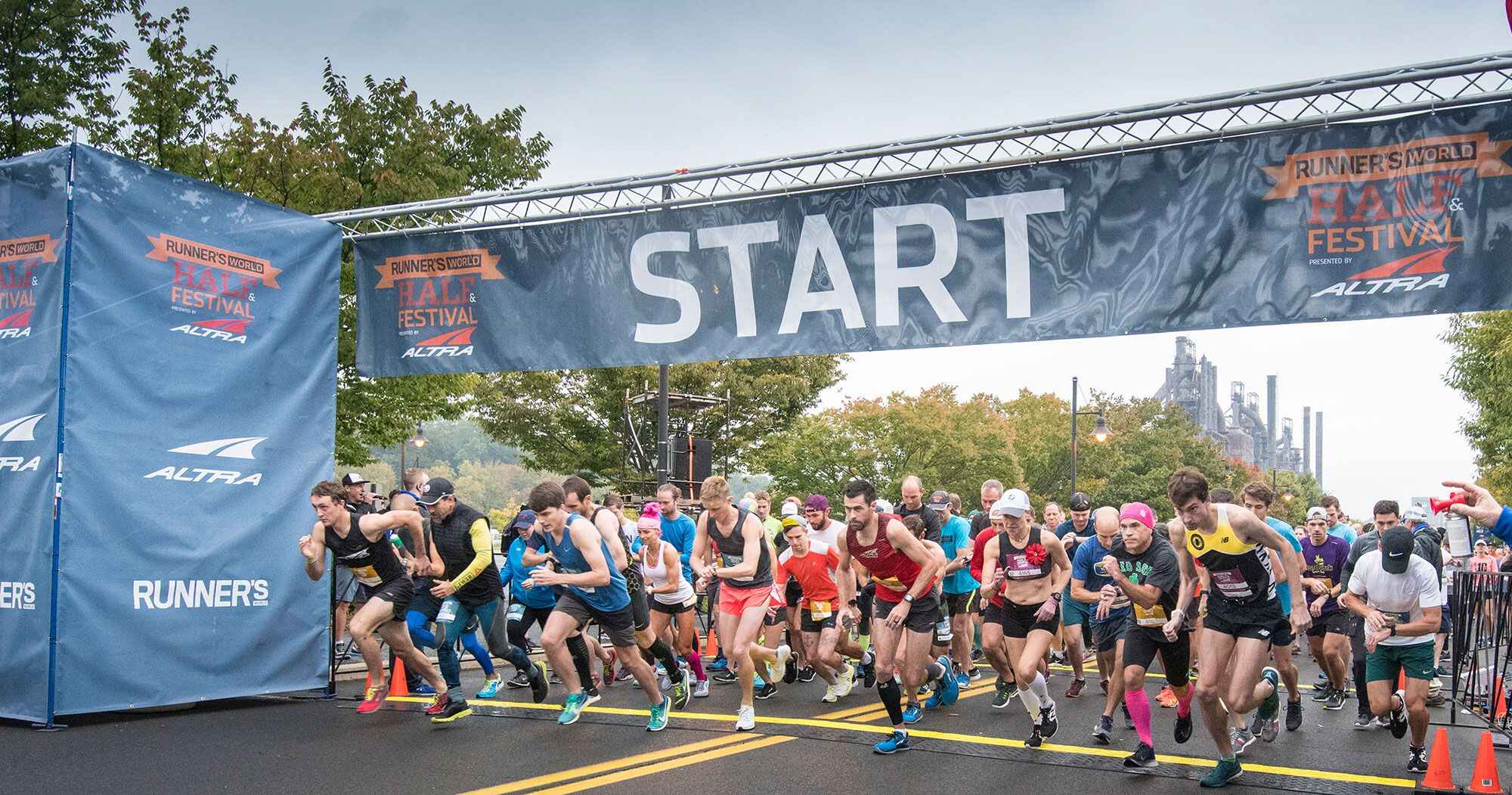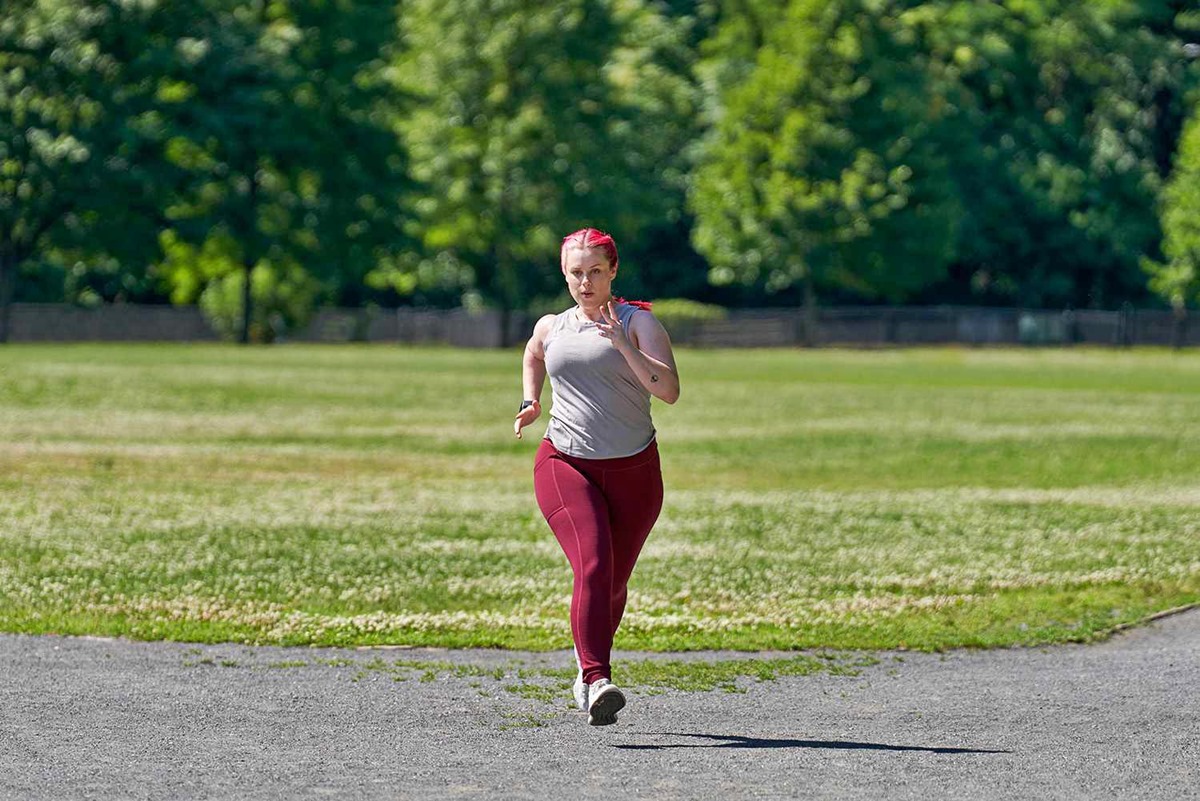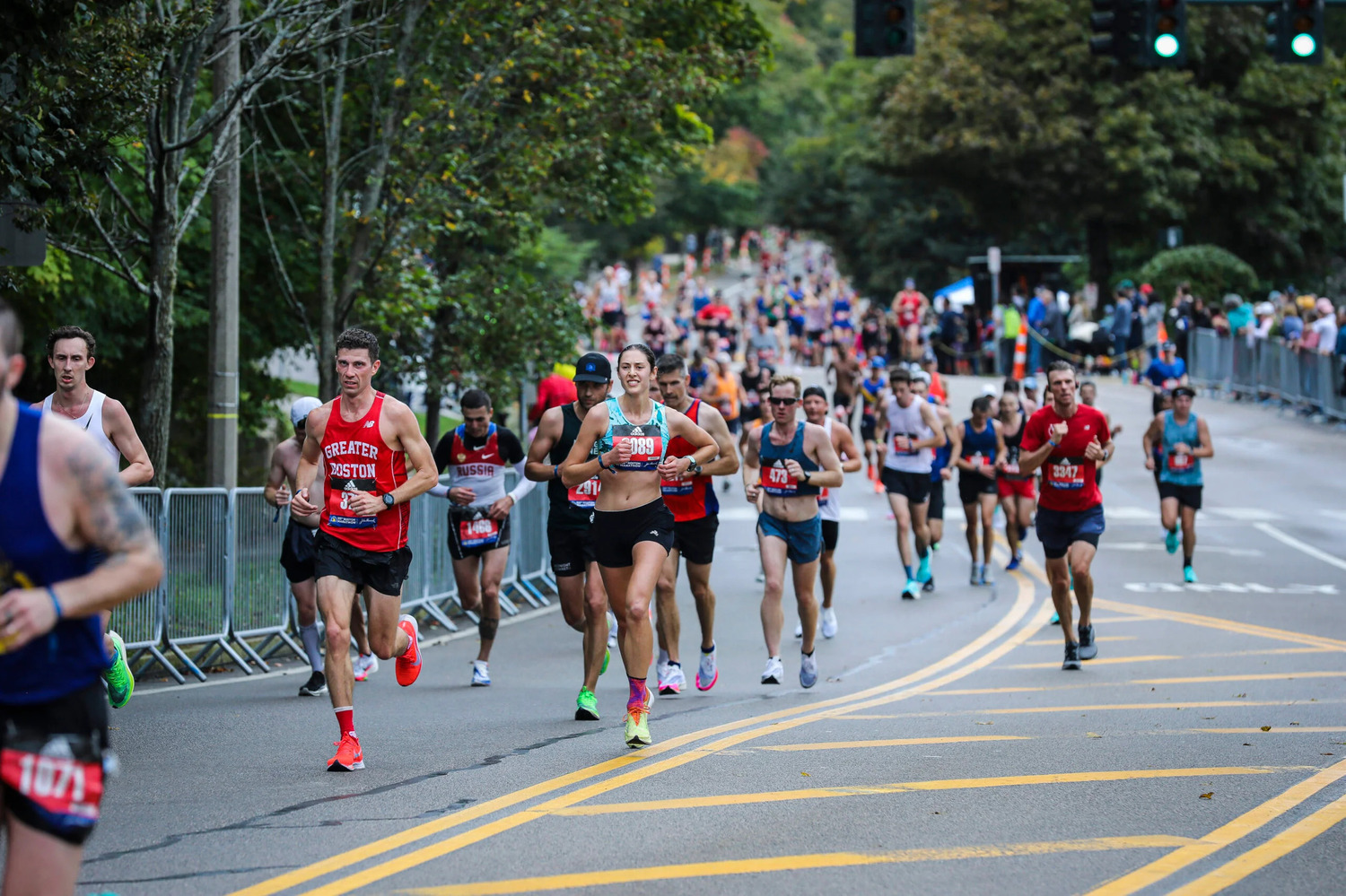Home>Misc>Featured>How To Run Faster During Long Distance Running


Featured
How To Run Faster During Long Distance Running
Modified: October 24, 2023
Improve your long distance running speed with our featured tips and techniques. Learn how to get faster and reach your goals!
Introduction
Long distance running is a physically demanding sport that requires both endurance and speed. While many runners focus primarily on building their endurance to complete the distance, improving your speed can greatly enhance your performance and overall enjoyment of the sport. Whether you’re training for a marathon, half-marathon, or simply looking to improve your running ability, incorporating speed training into your regimen is essential.
Speed is important in long distance running for a variety of reasons. First and foremost, it allows you to cover the distance more quickly, helping you achieve your race goals and set new personal records. Additionally, speed training helps enhance your overall running efficiency, making your stride more economical and reducing the risk of injuries. It also improves your cardiovascular fitness, enabling you to maintain a faster pace for longer periods.
Building speed in long distance running requires a balanced approach that includes building endurance, incorporating interval training, building strength and power, improving running form, optimizing nutrition, and prioritizing rest and recovery. In this article, we will explore these various aspects in detail and provide you with practical tips and strategies to help you get faster and more efficient in your long distance running.
Importance of Speed in Long Distance Running
When it comes to long distance running, speed is often overlooked, with most runners focusing solely on building endurance. However, developing speed is crucial for success in the sport. Here are a few reasons why speed is important in long distance running:
- Improved race performance: The primary benefit of speed in long distance running is improved race performance. By increasing your speed, you can cover the distance more quickly and achieve your desired race goals. Whether you’re aiming for a personal best or a podium finish, speed is the key.
- Enhanced running efficiency: Speed training helps to improve your overall running efficiency. It strengthens your leg muscles, improves your running form, and makes your stride more economical. As a result, you become a more efficient runner, using less energy and reducing the risk of injuries.
- Increased cardiovascular fitness: Speed training requires you to push your body to its limits, increasing your cardiovascular fitness. Over time, this improved fitness allows you to sustain a faster pace for longer periods without getting fatigued.
Incorporating speed workouts into your training routine also enhances your mental toughness. Speed training pushes you out of your comfort zone and challenges you to push through fatigue and discomfort. This mental resilience transfers to race day, allowing you to stay focused and maintain a strong pace even when you’re tired.
Moreover, focusing solely on building endurance can lead to a plateau in your performance. By neglecting speed, you may find it harder to improve your race times, hit new milestones, or overcome running plateaus. Incorporating speed training helps break through these plateaus and takes your running to the next level.
Overall, speed is an essential component of successful long distance running. It not only improves race performance but also enhances running efficiency, increases cardiovascular fitness, and builds mental resilience. So, don’t overlook the importance of speed in your training – incorporate speed workouts into your regimen and watch your performance skyrocket.
Building Endurance
Endurance is the foundation of long distance running. It is the ability to sustain a steady pace over an extended period. Building endurance allows you to cover longer distances with ease and maintain your desired pace throughout the race. Here are some tips to help you build endurance:
- Consistent training: Consistency is key when it comes to building endurance. Aim for regular running sessions, gradually increasing your mileage and duration over time. Start with shorter runs and slowly increase the distance each week.
- Long runs: Incorporate long runs into your training routine. These runs are typically done at a slower pace than your race pace but cover a longer distance. Long runs help build mental and physical stamina, allowing you to handle the demands of a long distance race.
- Progressive training: Gradually increase the intensity and duration of your runs to challenge your body and improve endurance. Implement a progressive training plan that includes a mix of easy runs, moderate-paced runs, and longer runs to gradually build up your endurance levels.
- Interval training: Although endurance training mainly focuses on slow and steady runs, incorporating interval training can also be beneficial. Interval training involves alternating between periods of high-intensity running and active recovery. This helps improve your cardiovascular fitness and builds endurance by increasing your body’s ability to recover.
- Cross-training: Don’t limit your training to running alone. Incorporate cross-training activities such as biking, swimming, or strength training to strengthen supporting muscles and prevent overuse injuries. Cross-training helps improve overall endurance and enhances your running performance.
- Tapering: Prioritize tapering before a race. Tapering involves reducing the intensity and volume of your training in the weeks leading up to the race. This allows your body to recover and adapt, ensuring that you are fresh and ready to perform at your best on race day.
Remember, building endurance takes time, so be patient and consistent with your training. Gradually increasing your mileage and incorporating different training techniques will help you build the endurance necessary for long distance running. Focus on maintaining a steady pace and gradually pushing your limits, and you will see significant improvements in your endurance levels over time.
Incorporating Interval Training
Interval training is a valuable tool for improving speed, endurance, and overall performance in long distance running. It involves alternating between periods of high-intensity running and active recovery. Here are some ways to incorporate interval training into your routine:
- Choose the right distance: Determine the appropriate distance for your intervals based on your current fitness level and goals. Shorter intervals, such as 400 meters or 800 meters, focus on improving speed, while longer intervals, such as 1 mile or 2 miles, help build endurance.
- Warm up and cool down: Before starting your interval session, make sure to warm up properly with dynamic stretches and a light jog. This will prepare your muscles and reduce the risk of injury. Similarly, cool down with a gentle jog and static stretches to aid in recovery.
- Vary your intervals: Mix up the length and intensity of your intervals to challenge your body and prevent plateauing. Experiment with different combinations, such as shorter bursts of intense effort followed by longer recovery periods or longer intervals with shorter recovery periods.
- Gradually increase intensity: Start with shorter intervals at a moderate intensity and gradually increase the pace and effort as your fitness improves. Push yourself during the high-intensity intervals but make sure to maintain proper form and avoid overexertion.
- Recover fully: Allow yourself enough recovery time between intervals to ensure you can maintain the quality and effort of each interval. Active recovery, such as light jogging or walking, helps to keep the blood flowing and aids in flushing out metabolic waste.
- Track your progress: Keep a record of your interval workouts to monitor your progress over time. Note the distances, times, and perceived effort for each interval session. This will help you gauge your improvement and make necessary adjustments to your training.
Integrating interval training into your running routine not only improves your speed but also enhances your aerobic capacity and cardiovascular fitness. It challenges your body to work at higher intensities, helping to improve your lactate threshold and ability to sustain a faster pace for longer periods.
However, it’s important to balance interval training with recovery and easy runs to avoid overtraining and minimize the risk of injury. Listen to your body and make sure to incorporate sufficient rest days and recovery periods in your training schedule.
By incorporating interval training into your long distance running routine, you can push your limits, improve your speed, and achieve better overall performance. With consistent effort and a well-structured training plan, you’ll see significant improvements in your race times and endurance levels.
Building Strength and Power
Building strength and power is essential for long distance runners, as it helps improve running efficiency, prevent injuries, and enhance overall performance. Here are some key ways to incorporate strength and power training into your long distance running routine:
- Strength training exercises: Include exercises that target major muscle groups, such as squats, lunges, deadlifts, and calf raises. These exercises help build strength in your lower body, promoting better running form and reducing the risk of injuries.
- Core exercises: Strengthening your core is crucial for maintaining stability and proper posture while running. Include exercises like planks, Russian twists, and bridges to target your abdominal muscles, back, and hips.
- Plyometric exercises: Plyometric exercises involve explosive movements that improve power and speed. Examples include box jumps, burpees, and jump squats. These exercises build lower body strength and improve your ability to generate force during running.
- Hill training: Incorporate hill training into your routine to develop leg strength and power. Running uphill strengthens your quads, calves, and hip muscles, while downhill running improves eccentric strength and stability. Include both uphill and downhill runs in your training for well-rounded strength development.
- Resistance training: Incorporate resistance bands or weights into your strength training routine to increase the intensity and challenge your muscles further. This can be done through exercises such as bicep curls, tricep extensions, and lateral raises.
- Balance and stability exercises: Work on improving your balance and stability through exercises like single-leg squats, standing on one leg, and Bosu ball exercises. This helps strengthen the smaller stabilizing muscles in your legs and improves your overall running form and efficiency.
It’s important to note that strength training should complement your running, not replace it. Aim for two to three strength training sessions per week, allowing at least 48 hours of recovery between sessions. Focus on using proper form and gradually progress the weights or resistance levels to continue challenging your muscles.
In addition to strength and power exercises, don’t neglect flexibility and mobility training. Incorporate dynamic stretching, foam rolling, and yoga into your routine to improve your range of motion, prevent muscle imbalances, and enhance recovery.
Remember, building strength and power takes time and consistency. Be patient and gradually increase the intensity and volume of your strength training over time. The improvements in your running performance will be well worth the effort.
Proper Running Form
Having proper running form is essential for long distance runners, as it promotes efficiency, reduces the risk of injuries, and maximizes performance. Here are some tips to help you improve your running form:
- Posture: Maintain an upright posture while running, with your head up, shoulders relaxed, and chest open. Avoid slouching or leaning forward, as this can lead to inefficient movement and unnecessary strain on your body.
- Footstrike: Aim for a midfoot or forefoot strike when landing with each stride. Avoid heel striking, as it can increase the impact on your joints and lead to injuries. Focus on landing softly and quietly, using your foot and ankle as shock absorbers.
- Cadence: Strive for a cadence, or step rate, of around 180 steps per minute. This helps maintain a quick turnover, reducing the impact on your legs and improving overall efficiency. Use a metronome or running app with a cadence feature to help you establish and maintain the desired rhythm.
- Arm position: Keep your arms relaxed and bent at a 90-degree angle. Allow them to swing naturally in sync with your legs, without crossing the midline of your body. Avoid excessive swinging or tensing of the arms, as it can waste energy.
- Strides and strides length: Take slightly shorter strides to prevent overstriding, which can lead to braking forces and increased risk of injury. Focus on quick turnover and pushing off with your toes to propel yourself forward.
- Engage your core: Keep your core muscles engaged and strong while running. A strong core provides stability and helps maintain proper alignment, enabling you to run more efficiently.
- Relaxed and controlled breathing: Breathe deeply and rhythmically, allowing for optimal oxygen intake. Avoid shallow breathing and tension in your chest and shoulders. Practice diaphragmatic breathing to enhance your lung capacity and running performance.
It’s important to remember that improving your running form takes time and practice. Start by focusing on one aspect of your form at a time and gradually incorporate the other tips as you progress. Consider incorporating drills, such as high knees, butt kicks, and skipping, into your warm-up routine to reinforce proper form and improve running mechanics.
Video analysis or working with a running coach can also be beneficial in identifying any specific issues with your form and providing individualized recommendations for improvement.
By consistently working on your running form and incorporating these tips into your training, you can become a more efficient and injury-resistant runner, allowing you to achieve your long distance running goals.
Nutrition for Long Distance Running
Nutrition plays a crucial role in long distance running, as it provides the fuel and nutrients your body needs to perform at its best. Proper nutrition can enhance your endurance, support recovery, and optimize overall performance. Here are some key nutrition tips for long distance running:
- Carbohydrates: Carbohydrates are the main source of fuel for long distance runners. Prioritize complex carbohydrates such as whole grains, fruits, vegetables, and legumes. These provide sustained energy and help maintain blood sugar levels during long runs.
- Protein: Protein is important for muscle repair and recovery. Include lean sources of protein such as poultry, fish, tofu, beans, and dairy products in your meals and snacks. Aim for a balance of carbohydrates and protein in each meal to support proper muscle function.
- Hydration: Staying hydrated is crucial for optimal performance. Drink water regularly throughout the day and during your runs. For longer runs, consider electrolyte drinks to replace lost electrolytes. Listen to your body and drink when you’re thirsty.
- Pre-run fuel: Consume a light meal or snack rich in carbohydrates a couple of hours before your run. This provides the necessary energy without causing discomfort during exercise. Experiment with different foods to find what works best for you.
- During-run fuel: For long runs, consider consuming easily digestible carbohydrates during your run, such as energy gels, chews, or sports drinks. This provides a quick source of fuel to maintain energy levels.
- Post-run recovery: Refuel with a combination of carbohydrates and protein within 30 to 60 minutes after your run to replenish glycogen stores and support muscle recovery. Good options include a smoothie with fruit and protein powder, a yogurt parfait, or a meal with lean protein and whole grains.
- General nutrition: Focus on consuming a balanced diet that includes a variety of fruits, vegetables, whole grains, lean proteins, and healthy fats. This ensures you’re getting essential vitamins, minerals, and antioxidants to support overall health and performance.
Every runner is unique, so it’s important to listen to your body and adjust your nutrition plan accordingly. Pay attention to how different foods and hydration strategies affect your energy levels, digestion, and performance. Consider consulting with a registered dietitian who specializes in sports nutrition for personalized recommendations.
Lastly, don’t forget the importance of timing your meals and snacks appropriately. Experiment with your pre-run and post-run nutrition to find the timing that works best for you and allows for optimal performance and recovery.
By fueling your body with the right nutrients and staying properly hydrated, you can support your long distance running goals and perform at your best during training and races.
Rest and Recovery
Rest and recovery are integral components of long distance running training. Adequate rest allows your body to repair and rebuild itself, preventing injuries and optimizing performance. Here are some important aspects to consider when it comes to rest and recovery:
- Rest days: Incorporate scheduled rest days into your training plan. These days allow your muscles, tendons, and ligaments to recover from the stresses of running. Use this time to relax, engage in low-impact activities, or focus on active recovery exercises like yoga or swimming.
- Sleep: Getting enough quality sleep is crucial for recovery and overall well-being. Aim for 7-9 hours of sleep each night to allow your body to repair and recharge. Develop a consistent sleep routine and practice good sleep hygiene to ensure a restful night’s sleep.
- Listen to your body: Pay attention to any signs of fatigue, pain, or overtraining. Pushing through excessive fatigue or ignoring pain can lead to injury. Take rest days or modify your training as needed to prevent burnout and ensure long-term progress.
- Active recovery: Engage in low-intensity activities such as walking, cycling, or swimming on rest days or after intense workouts. Active recovery promotes blood circulation, reduces muscle soreness, and helps flush out metabolic waste products.
- Massage and foam rolling: Incorporate massage or foam rolling into your routine to release muscle tension and promote recovery. These techniques can help reduce muscle tightness and improve flexibility.
- Nutrition: Proper nutrition plays a significant role in rest and recovery. Ensure you’re consuming enough calories, especially carbohydrates and protein, to support muscle repair and glycogen replenishment. Stay hydrated by drinking water throughout the day.
- Periodization: Implement periodization in your training plan, which involves alternating periods of high-intensity training with lower intensity or recovery-focused training blocks. This allows for better overall recovery and prevents overtraining.
Remember that rest and recovery are just as important as the actual training itself. They allow your body to adapt to the stresses of training and become stronger. Neglecting rest and recovery can lead to overtraining, decreased performance, and increased risk of injuries.
Listen to your body, prioritize sleep, incorporate active recovery, and fuel your body with proper nutrition. By incorporating these strategies into your training regimen, you’ll optimize your performance, reduce the risk of injuries, and enjoy the rewards of long distance running.
Setting Realistic Goals
Setting realistic goals is essential for long distance runners. It provides motivation, focus, and a sense of accomplishment. However, it’s crucial to set goals that are achievable and aligned with your abilities and current fitness level. Here are some key factors to consider when setting realistic goals:
- Assess your current fitness level: Take stock of your current running abilities, endurance, and speed. Be honest with yourself about your strengths and areas for improvement. This will help you gauge where you are in your journey and set goals that are attainable yet challenging.
- Consider your available training time: Take into account your other commitments, such as work, family, and personal life. Determine how much time you can realistically devote to training each week while still maintaining a healthy balance. This will help you set realistic training expectations and goals.
- Break it down: Instead of focusing solely on the end goal, break it down into smaller, more manageable milestones. This allows you to track your progress and stay motivated along the way. Celebrate each milestone achieved, as it will keep you motivated to continue pushing forward.
- Consider your race schedule: If you have a specific race in mind, consider its distance, terrain, and other factors that may influence your performance. Set goals that align with the nature of the race and your abilities. For example, if it’s your first marathon, aiming to complete it within a specific time frame may be a more attainable goal than setting a new personal record.
- Be flexible: Life is full of unexpected events, and sometimes adjustments to your goals may be necessary. Adaptability and flexibility are key traits for long distance runners. If circumstances change or you encounter obstacles along the way, be open to adjusting your goals to maintain motivation and continue moving forward.
- Accountability and support: Share your goals with a running buddy, friend, or coach who can provide accountability and support. Having someone to share your progress with and lean on during challenging times can significantly impact your motivation and commitment to achieving your goals.
Setting realistic goals is not about settling or underestimating your potential. It’s about setting yourself up for success by considering your current abilities, circumstances, and limitations. As you achieve your goals, you’ll gain confidence and have a solid foundation to set new, ambitious targets for the future.
Remember, setting goals should be a personal and individualized process. It’s important to focus on your own journey rather than comparing yourself to others. Embrace the process, celebrate small victories, and strive for continuous improvement. By setting realistic goals, you’ll maintain motivation, enjoy the journey, and find long-term success in your long distance running endeavors.
Conclusion
Long distance running is a demanding but rewarding sport that requires a holistic approach to training. By incorporating speed training, building endurance, focusing on proper running form, strengthening your body, optimizing nutrition, prioritizing rest and recovery, and setting realistic goals, you can take your long distance running to new heights.
Improving your speed and building endurance go hand in hand. By incorporating interval training and gradually increasing your mileage, you can improve your overall running efficiency and race performance. Don’t forget the importance of proper running form, as it can help you become a more efficient and injury-resistant runner.
Building strength and power is key to enhancing performance and preventing injuries. Incorporate strength training exercises, plyometrics, and hill training to develop the necessary strength and power to excel in long distance running.
Nutrition plays a crucial role in fueling your runs and supporting recovery. Prioritize carbohydrates and protein, stay hydrated, and pay attention to proper pre-run and post-run nutrition.
Rest and recovery cannot be overlooked. Incorporate rest days, prioritize sleep, engage in active recovery, and listen to your body to prevent overtraining and optimize performance.
Finally, setting realistic goals is crucial for long term success. Assess your current fitness level, consider your available training time, break down your goals into smaller milestones, and stay flexible along the way.
By incorporating these key elements into your long distance running routine, you can improve your performance, achieve your goals, and enjoy the journey of becoming a stronger, faster, and more resilient runner.









